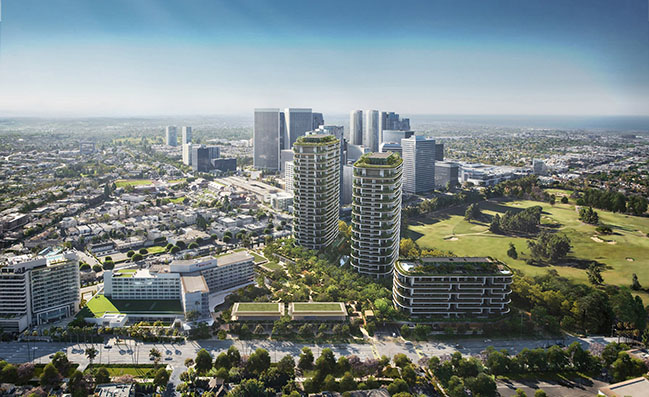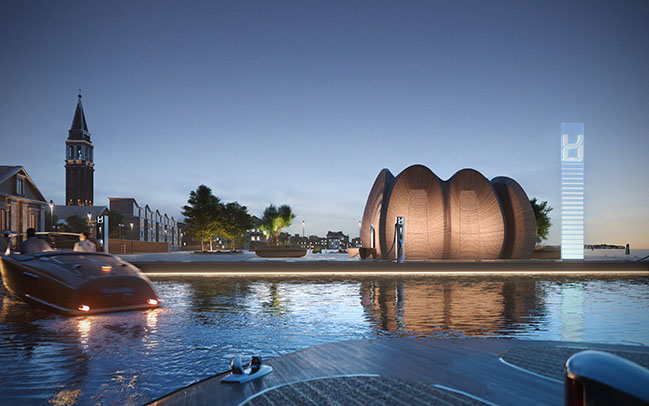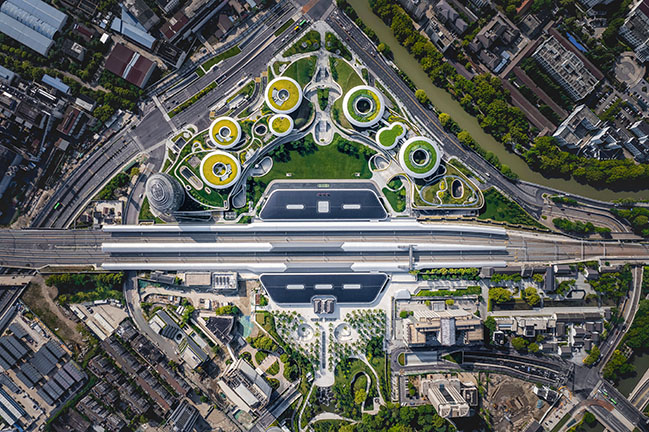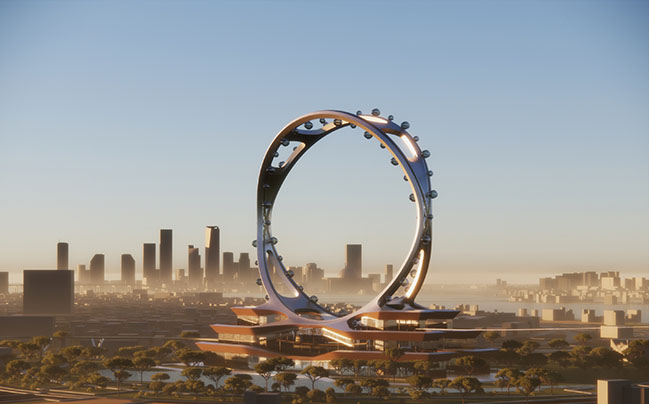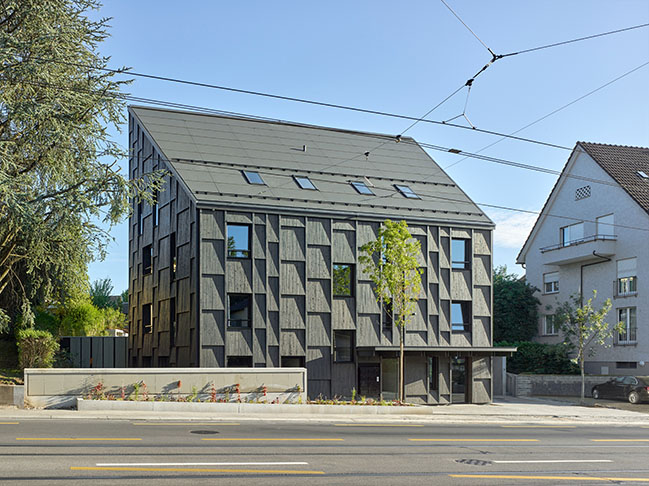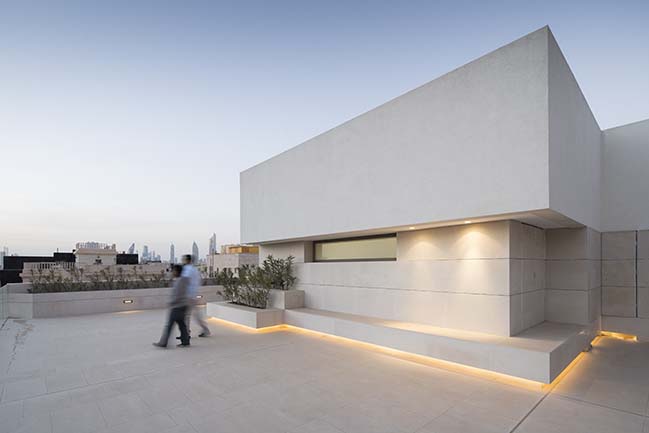02 / 09
2024
MVRDV’s Gate M West Bund Dream Center transforms a former cement factory with a three-dimensional pedestrian network...
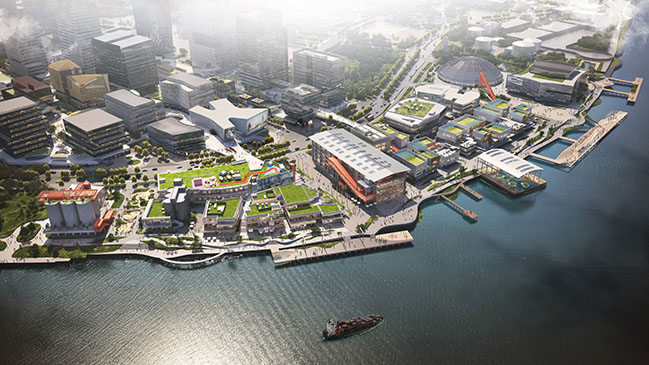
> Chengdu Tianfu Software Park by MVRDV
> The Pyramid of Tirana by MVRDV inaugurated
From the architect: MVRDV is revealing its combined masterplan and architectural designs for a riverside leisure and culture district in Shanghai known as the Gate M West Bund Dream Center. The plan, which is currently under construction, will transform a collection of buildings of different styles and time periods, adapting a former industrial zone while making use of the existing structures and thus minimising carbon emissions. With its design concept centred on the movement of people, expressed through a network of bright orange paths, stairs, ramps, and bridges, the design turns this patchwork of disused and incomplete buildings into a cohesive whole, generating a bustling and lively atmosphere on the banks of the Huangpu River.
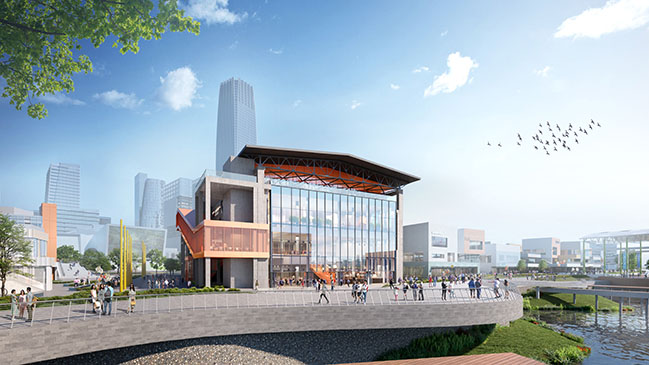
Located to the south of Shanghai’s city centre, the project continues an expanding string of cultural projects emerging near the river on Shanghai’s West Bund. The site is currently home to two very different sets of buildings: a handful of large industrial structures represent the leftovers of the area’s history as a cement factory, while the in-between space is filled with unfinished constructions from previous renovations.
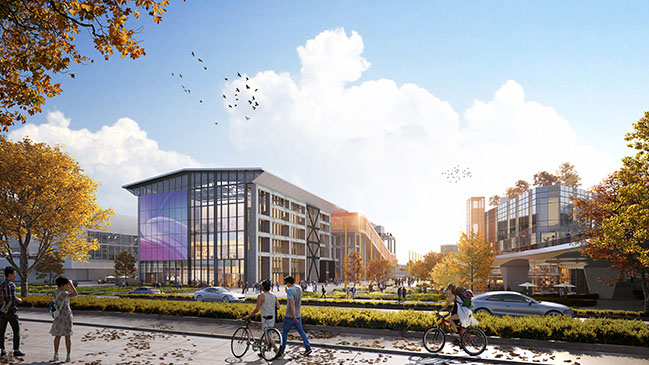
MVRDV’s masterplan for the site retains all of these existing structures, and takes a lighttouch approach to renovating the more recent structures, saving as much of the existing materials as possible and minimising the embodied carbon involved in transforming the site. The older industrial buildings will receive a more bold treatment, highlighting the industrial heritage and distinguishing between old and new. Many of the industrial buildings will become cultural spaces, while hotels, restaurants, cafés, and retail will typically fill the newer structures. Taking inspiration from the site’s history, movement was a key principle of the design – in the past, the area was organised around the movement of raw materials for cement production; in the future, it will enable the free movement of people with just as much efficiency.
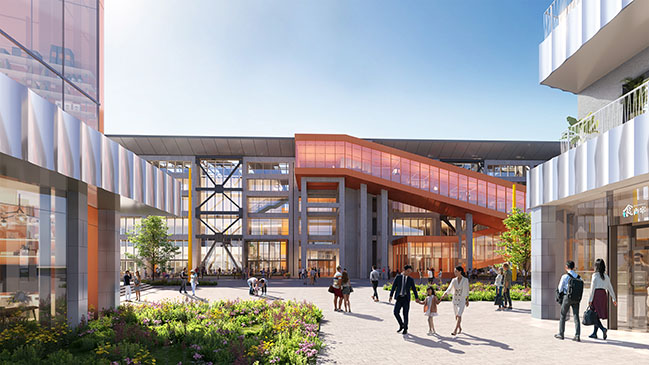
The site is organised around key axes that form the primary public areas, with landscape designs provided by James Corner Field Operations. The most important of these axes is a central spine forming the main route from one end of the site to the other. The masterplan’s defining element, however, comes in how it uses different levels, with activated rooftops, a series of elevated terraces by the riverbank, and a network of staircases and elevators creating a three-dimensional promenade that permeates the site with its eye-catching orange colour.
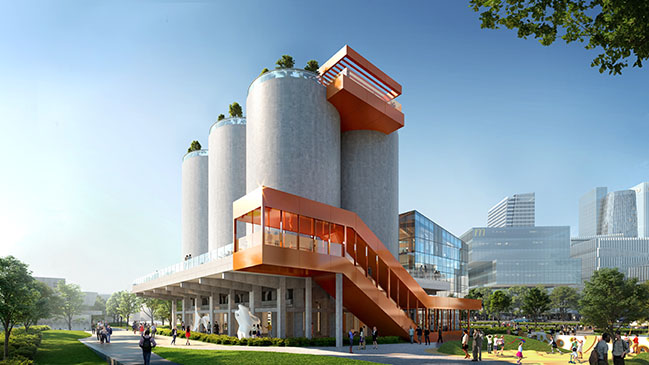
“This project is an excellent demonstration of how the time between a building’s realisation and its renovation seems to get shorter and shorter”, says MVRDV founding partner Jacob van Rijs. “It used to be that we only transformed culturally significant buildings from earlier time periods; here we transform not only 20th century industrial heritage, but even unfinished buildings from recent years. It goes to show how much value every city has in its existing structures that is ripe for designers to unlock.”
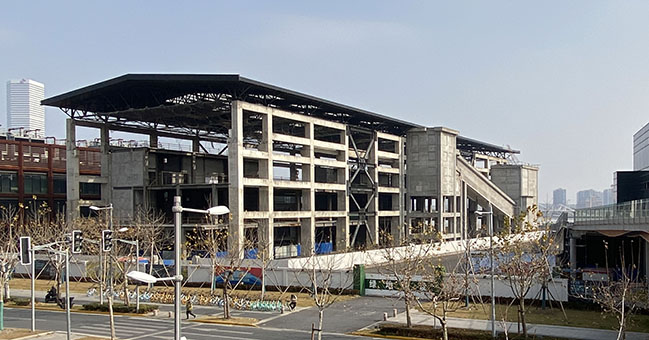
Within the masterplan, Schmidt Hammer Lassen Architects and Shanghai-based architects Atelier Deshaus will provide the architectural design for buildings in the northern half of the site. MVRDV will design the buildings in the southern half of the site – including the district’s central structure, a former warehouse that will become known as The Dream Center Hall.
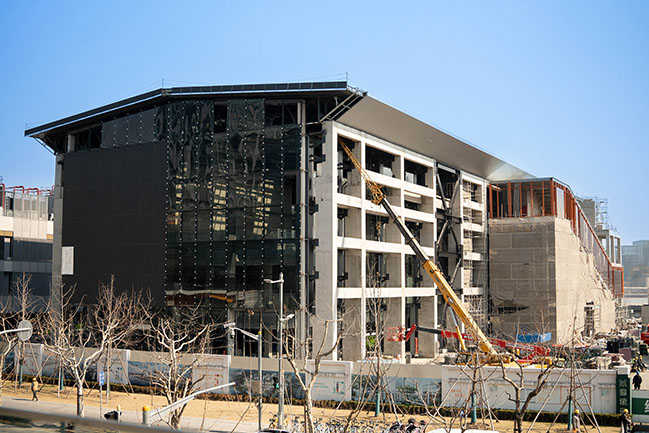
Before its transformation, this building was an imposing yet skeletal structure, comprising little more than two walls of concrete frames and an expansive steel-truss roof. Using minimalistic glass infill to highlight the rough, raw original structure, MVRDV’s design transforms the building into a combined leisure and culture destination hosts retail, cafés, and restaurants on the lower floors, and a large exhibition and event space on the top floor to take advantage of the voluminous, column-free space. On a mezzanine level above this, facing the river, a restaurant with an external terrace takes advantage of the views of the city.
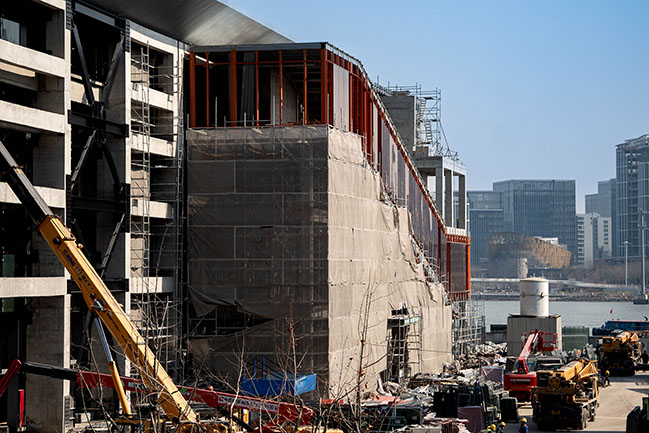
The lobby of The Dream Center Hall forms a part of the masterplan’s central spine, cutting through the building from one side to the other. In addition to the internal staircases, one of the design’s most striking features is the external staircase, finished in orange cladding and orange-tinted glass, which rises along one side of the building. Created by adapting an existing conveyor belt structure, this external staircase connects with the masterplan’s threedimensional promenade, and includes platforms with space for seating, pop-up exhibitions and stores, and in one landing space, a café.
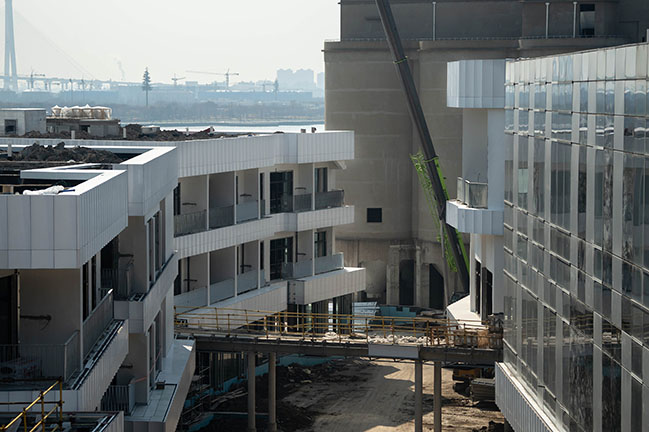
Architect: MVRDV
Client: Hua Zhi Men Capital
Location: Shanghai, China
Year: 2021 -
Size: 34,000 sqm
Founding Partner in charge: Jacob van Rijs
Partner: Wenchian Shi
Design Team: Kyo Suk Lee, Peter Chang, Sredej Bunnag, Luca Xu, Shanshan Wu, Yunxi Guo, Albert Parfonov, Amanda Galiana Ortega, Americo Iannazzone, Dorota Kaczmarek, Echo Zhai, Edvan Ardianto, Haocheng Yang, Jiameng Li, Jiani You, Kevin Zhao, Kristina Knauf, Meng Yang, Ming Kong, Martin Chen, Sen Yang, Shushen Zhang, Siyi Pan, Steven Smit, Tanja Dubbelaar, Xiaoliang Yu, Yayun Liu, Yihong Chen, Evan O'Sullivan, Peilu Chen
Visualisations: Antonio Luca Coco, Jaroslaw Jeda, Luca Piattelli, Marco Fabri, Stefania Trozzi
Director MVRDV Shanghai: Peter Chang
Co-architect: AISA
Landscape: James Corner Field Operations
Structural: ARUP, AISA
Façade: RFR
Interior Architect: CL3, Xu Studio
Lighting Design: RDI
Visualisations: © Ucharm
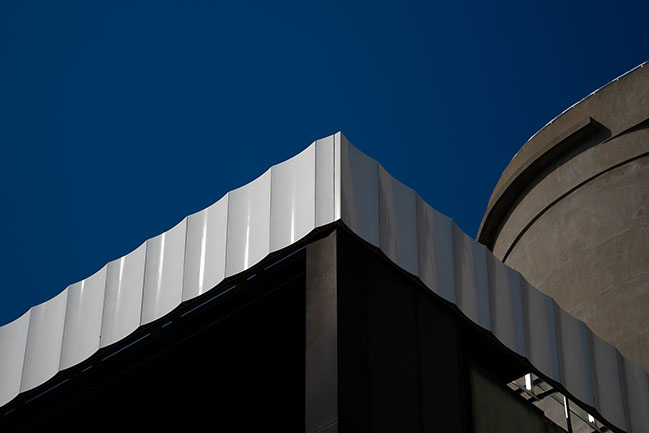
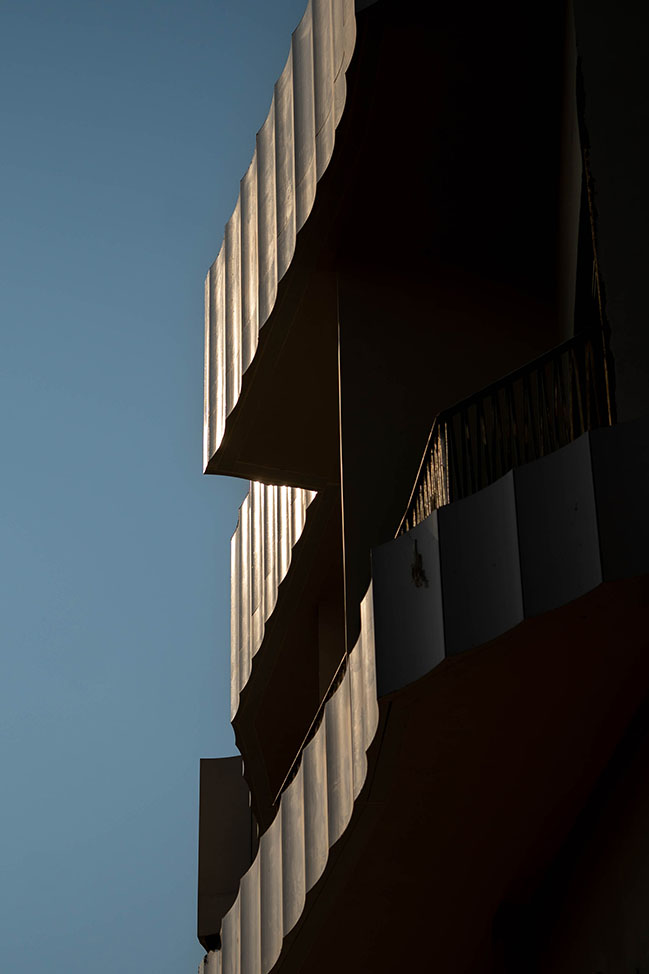
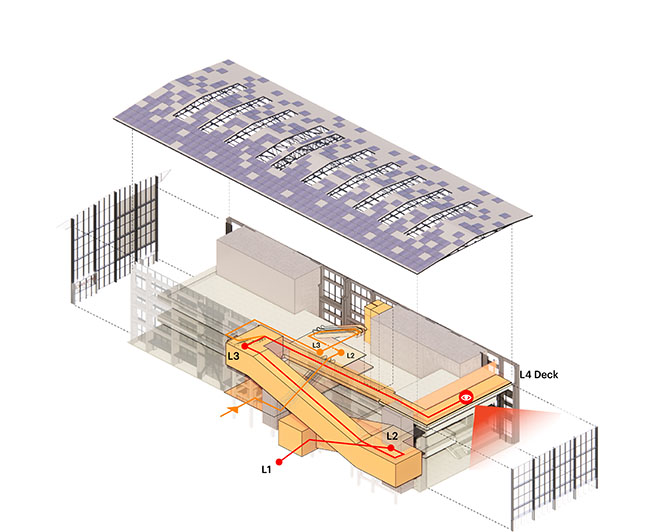
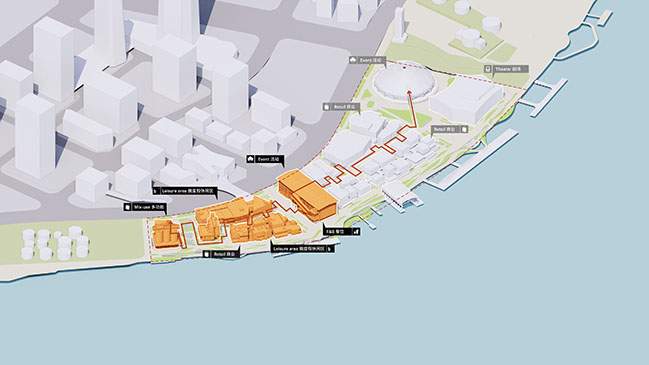
Gate M West Bund Dream Center by MVRDV
02 / 09 / 2024 MVRDV's Gate M West Bund Dream Center transforms a former cement factory with a three-dimensional pedestrian network...
You might also like:
Recommended post: MT Villa in Kuwait by Alhumaidhi Architects
